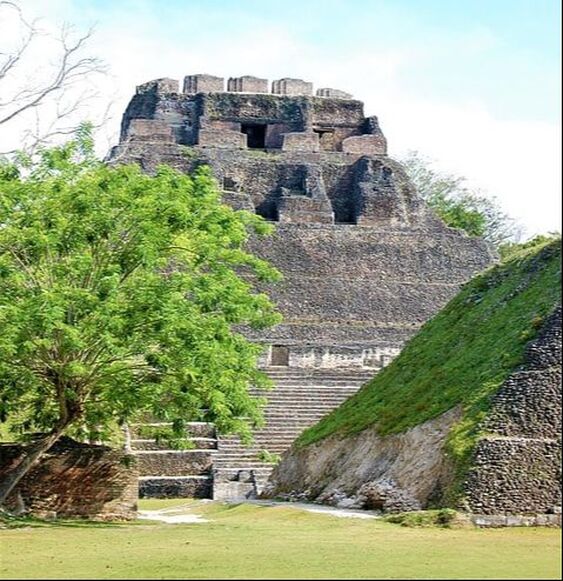|
The largest centers of the Maya, preserved to this day, are located in Xunantunich (on the border with Guatemala), Altun Ha, Caracol, and Lamanai. These ancient cultural centers have not yet been fully studied and are of great value to historians and archaeologists. Xunantunich is one of the biggest centers of Mayan culture. It is located to the west of Belize, near the Mopan River. The name of the city means "stone woman" if translated from the Yucatec language. According to legends, some mystical creature wanders in these lands. It is said that sometimes one can see the ghost of a woman near the pyramid. She wears a white dress and has red glowing eyes. Climbing the stone stairs, she then disappears into the wall. The 40-meter high pyramid called "El Castillo", the second highest pre-Columbian architectural attraction in Belize, with a two-story building at the top, on the frieze of which various mythological symbols, deities, and people are depicted proudly, rises over the city! It still harbors many unsolved mysteries. El Castillo was built in the 5th century AD. Its walls are decorated with stucco ornaments that are not just decoration, but have their own symbolism - on one side there are images of “life”, on the other – of “death”. In 600-670, the city of Xunantunich began to develop and grow. At this time, it fell under the authority of the neighboring city of Naranjo. However, approximately in 750, residents started to leave Xunantunich for no reason. Various structures of the city belong to the classical period, from III to X centuries AD. Some buildings were badly damaged by an earthquake during the years of the city’s existence. The center of the city is more than 2,5square kilometers and includes 6 squares, around which 25 palaces and temples are situated. Lime facades with reliefs were found on some buildings. Many constructions of the city are still hidden by the jungle or are almost completely underground. The first research on Xunantunich was carried in 1894. Later, in the 20th century, excavations have been carried out repeatedly there. In July 2016, during excavations at the site of the city of Xunantunich, a team of archaeologists announced the opening of a tomb, which probably belonged to the ruler of the ancient Maya. The research is currently ongoing, but we can already say with certainty that the burial is one of the largest among those found in Belize. Inside, in addition to the remains of an adult male, who was about thirty years old, archaeologists discovered four obsidian blades, pots, vases, jadeite beads, as well as the remains of a jaguar or deer. The Mayan cities are like “stone computers”, the observatories, where they accurately calculated the orbital periods of the planets and stars. The Mayan calendar count of days goes into such distant past, billions of years before our solar system appeared. They probably discovered the secrets of Eternity and the course of time. Archaeological excavations of Xunantunich are still underway; the eastern facade of the pyramid has not yet been cleared of centuries-old sediments. However, the western frieze of the pyramid was preserved just fine, with ornaments in stone, and different symbols. What other secrets do the ancient ruins keep? Only time will tell. “The trend of all knowledge at the present is to specialize, but archaeology has in it all the qualities that call for the wide view of the human race, of its growth from the savage to the civilized, which is seen in all stages of social and religious development.”
|
AuthorPhoenix Voyagers Archives
January 2023
Categories |
|




 RSS Feed
RSS Feed




